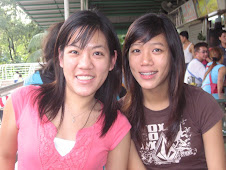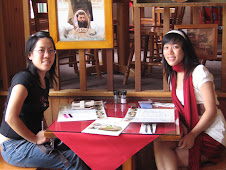
when we first started living in the kampong, there was no electricity at all. it was pitch dark at night and we had to rely on the kerosene lamp, also called a wick lamp. even when electricity was introduced to the kampong with the help of a very large and noisy generator, the supply was not continuous. the electric light came on at around six thirty in the evening and just before midnight, the generator would be shut down. all in all, we had about five hours of electricity each day.
my more studious kampong friends who mugged beyond eleven thirty had to have the wick lamp as their companion. we also had a lighted lamp in the bathroom-cum-toilet which was in an outhouse.
a wick lamp has a small canister to contain the kerosene. there is also a wick, usually made of cotton. a knob which turns a sprocket controls the length of the exposed wick. the bottom half of the wick is dipped in the kerosene and by some capillary action, the absorbed kerosene travels to the top part of the wick.
when the top part of wick is lit, the wick burns and produces a flame. there is a piece of cylindral or curved glass which protects the flame and prevents it from being blown out. the glass also reduces the risk of the wick lamp as a fire hazard.
the size of the flame - the brightness - can be controlled by adjusting the length of the wick. this is done by turning the knob clockwise or anticlockwise. however, the flame cannot be too intense otherwise it will produce black smoke and may also cause the glass to crack.
the light from the small kerosene lamp can last for hours, right through the night.
when we ran out of kerosene, we would go to the provision shop with a used empty bottle to buy kerosene. the kerosene came in a tin. the shopkeeper would place a funnel at the mouth of the bottle and using a device, which resembled a giant whistle, he would transfer the kerosene from the tin into the bottle.







2 comments:
In bygone days when there were frequent black outs (electrical power failures)we used kerosene lamps for lightings at night. During the Japanese occupation, it was hard to get kerosene and we used carbide lamps. It is a simpple contraption. A cylindrical container that has a cover with a cylindrical pipe in the center. The pipe is about 15 cm in height by 1.5 cm in diameter. Carbide is a compound of carbon and calcium. It was put in the contaimer and added with water. Chemical action took place and acetylene gas released and burned at the end of the pipe as lamp.
now that you mentioned, i remember those carbide lamps. the container was like the smaller ovaltine tin and the pipe was narrow and tapered at the end. the gas burnt quite brightly.
Post a Comment